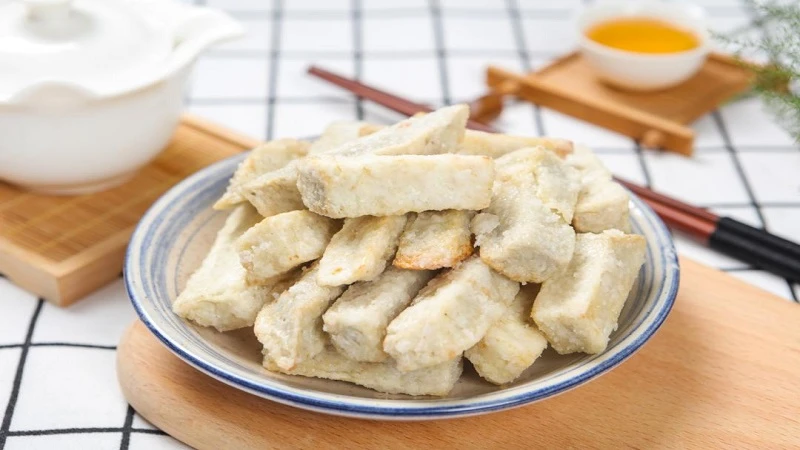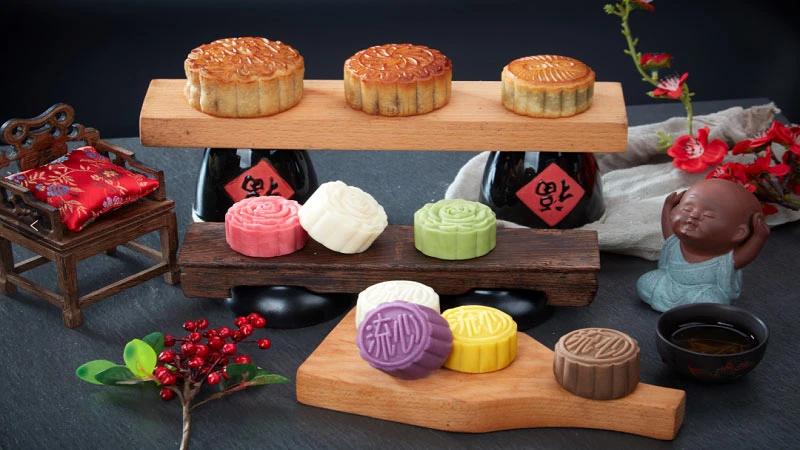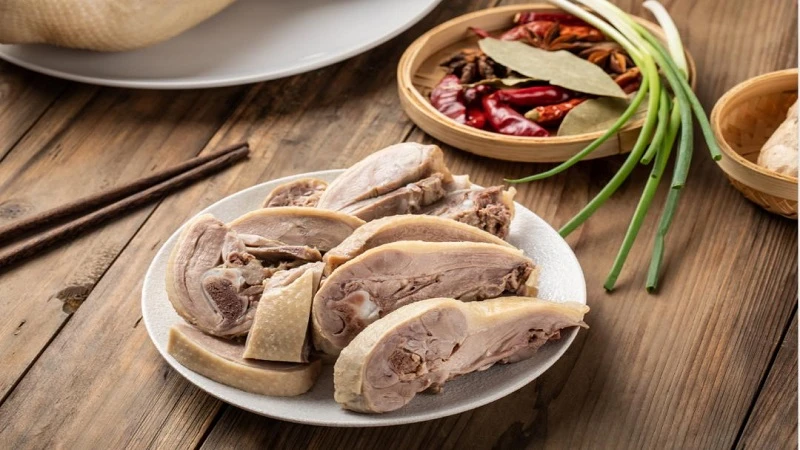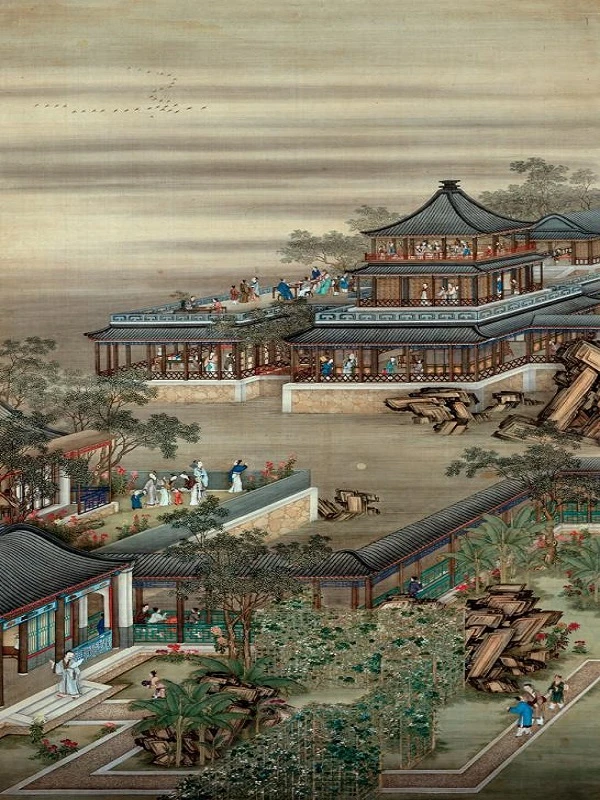The Mid-Autumn Festival is often synonymous with moon-gazing, family gatherings, and mooncakes. However, in ancient times, this festival was far more than just an evening dedicated to the moon. What if the skies were overcast, and the full moon hidden? How did the people of the past still manage to celebrate? Even in the absence of a visible moon, their festivities were rich and varied, showcasing traditions and customs beyond simply admiring the celestial body.
Moonless Festivities: Celebrating Togetherness
A traditional painting from the Qing Dynasty, titled The Auspicious Mid-Autumn (中秋佳瑞图), provides a glimpse into how ancient people celebrated this festival. Interestingly, the moon is not depicted in the artwork, yet the scene is filled with symbols of unity and joy. Fruits such as pomegranates, melons, and lotus roots are prominently featured, representing family harmony and prosperity. Even in the absence of the moon, people would gather to enjoy each other’s company, marking the occasion with wishes for happiness, fertility, and abundance.
The essence of the festival lay not only in viewing the moon but in its deeper cultural significance, centered around family reunions and expressions of good fortune. The “Four Auspicious Trees” – the parasol tree and osmanthus tree, among others – were also believed to bring blessings to households. The importance of these traditions highlights that Mid-Autumn Festival wasn’t just a time to gaze at the night sky but a communal celebration steeped in ritual and shared joy.

Food and Traditions: More Than Just Mooncakes
While mooncakes have become an iconic part of Mid-Autumn Festival, this delicious treat is just one of the many culinary delights associated with the holiday. During the Song Dynasty, these cakes were initially known as "palace cakes" among the royal families, while commoners referred to them as "small cakes" or "moon rounds." The well-known poet Su Dongpo even penned the line, "Small cakes taste like the moon, filled with butter and sweetness," capturing the essence of early mooncakes, which were already becoming a festival staple.
As time went on, mooncakes evolved, and by the Southern Song Dynasty, they were officially referred to as “mooncakes,” although their recipe was relatively simple compared to the elaborate varieties we enjoy today. Nevertheless, mooncakes, in any form, have always symbolized reunion and celebration under the same moonlit sky.
But mooncakes were not the only delicacies on the Mid-Autumn table. The festival also featured a variety of seasonal treats across different regions of China. For instance, in Beijing, pomegranates were considered indispensable, symbolizing family unity and abundance. In the southern region of Shunde, people savored osmanthus duck, water caltrops, lotus roots, and crabs. Each dish held symbolic meanings, such as lotus roots representing a harmonious marriage and taro symbolizing good fortune due to its phonetic similarity with the word "excess" in Chinese.
In ancient Jiangnan, a region known for its rich culinary traditions, the festival spread a wide array of flavors. Nanjing's famous osmanthus duck, which reached peak flavor during the fragrant osmanthus season, was a local favorite. Taro, drizzled with a sweet osmanthus syrup, added a poetic touch to the meal, reflecting the festival’s blend of gastronomy and romance. These foods turned the poetry of the season into tangible delights on the dining table, uniting flavors with the festival’s themes of joy and abundance.
Wine, too, played a significant role during the Mid-Autumn Festival. According to records from the Song Dynasty, fresh batches of wine were brewed just in time for the holiday, and shops decorated their storefronts with colorful banners and flags, enticing customers. The streets were lively as citizens rushed to purchase the limited-edition beverages, and by afternoon, all the wine had usually sold out. People would sip their drinks under the full moon, savoring the moment in an atmosphere of festivity and good cheer.
Poetry and the Moon
For centuries, poets and scholars have turned to the moon for inspiration, particularly during the Mid-Autumn Festival. The sight of the luminous orb in the sky not only evoked thoughts of reunion but also stirred feelings of longing and nostalgia. The iconic verse by Su Shi, “When will the moon be clear and bright? Raise a toast and ask the sky,” has resonated through the ages, encapsulating both the joy and sorrow that often accompany the fleeting moments of human existence.
Even when physically apart from their loved ones, poets could find solace in the moon’s steady presence, knowing that its glow reached across distances. Tang Dynasty poet Li Bai famously raised his cup to the moon, poetically creating company out of his shadow and the moonlight, a romantic notion that has echoed throughout Chinese history. The moon, in this sense, became a symbol of both unity and separation, offering comfort to those who gazed upon it, regardless of where they stood.
In the words of another timeless verse, “Tonight, the bright moon is for everyone; who knows whose thoughts are wandering in the autumn breeze?” The connection between the moon and the heart is one that transcends time and place, and Mid-Autumn Festival remains a celebration of that universal bond.
The Legacy of Mid-Autumn Today
Though centuries have passed, the traditions of the Mid-Autumn Festival remain alive and well, cherished by families across the globe. This festival is no longer just a celebration of the full moon or a chance to indulge in festive foods, but it has evolved into a symbol of national unity and cultural pride. Events like the annual Poetry and Wine Cultural Festival in Luzhou, Sichuan, continue to preserve and promote these customs, inviting people from all walks of life to participate in the rich heritage of the festival.
Today, when we look up at the same bright moon that our ancestors admired, we carry with us the same emotions that they did—joy, nostalgia, and a sense of connection to something greater. Whether through poetry, wine, or family gatherings, the Mid-Autumn Festival continues to be a powerful reminder of the ties that bind us, across time, space, and generations.




👍👍👍
Omg, finally someone mentions not only mooncakes!!!!!